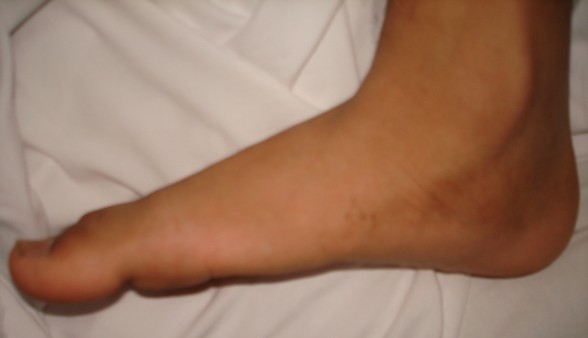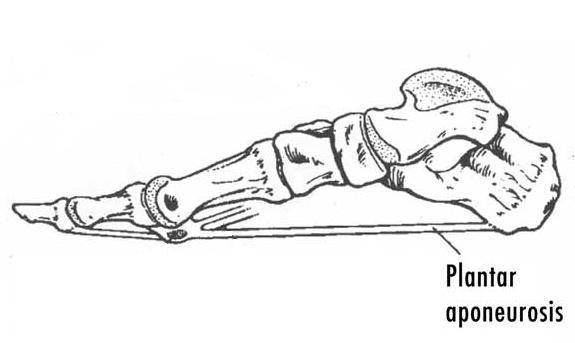Flat Feet – Arch Pain
Flat feet, also known as pes planus, is a birth defect, which consists of flattened arch of the foot. The normal human footprint, if closely seen, consists of the heel, the outer edge of the foot, and the toes. This clearly indicates that the inner edge of the foot does not touch the ground. This is because of the arch of the foot, which maintains the balance of the body while walking or running. However, not all people are lucky enough to have this fabulous anatomical feature. They are the people, who have flat feet (Picture 1). Flat feet is a condition, which is present since childhood. But the absent arches of foot are only realized during adolescence, when they start manifesting in the form of activity related pain. This episodic pain dramatically goes away without any medication, simply with rest and relaxation. But its repeated occurrence is frequently debilitating.
Picture 1: Flat foot
(source: Wikimedia)
Flat feet occur because of several causes, few of them are diseases and some are said to be physiologic. All babies seem to have flat feet because of the pad of fatty tissue along the inner edge of their feet. As age advances this tissue is absorbed by the body and by the age of 10 years only a few of the flat footed babies retain their flat feet. This is called as persistent flat foot, which can be completely normal or a disease. So how do we find out if a child really has flat foot ?
Arch of Foot
In order to understand diagnosis of flat feet, one has to understand the structure of the arches of the foot. For descriptive purpose let us divide the foot into two parts – front foot and back foot. Now the front-foot and back foot are held together by the plantar aponeurosis (Picture 2), which is a sheet of tissue pulling the front and back foot together, such that it becomes hollow in the middle. This hollow is more pronounced in the inner part of the foot and is called the longitudinal arch. The curve or hollow of the longitudinal arch is flexible and contours according to the surface on which the foot lands. In this manner, one can walk on any kind of surface, without even thinking about it.
Picture 2: Plantar aponeurosis
(source: Wikimedia)
Now when a foot is flat, it cannot adjust to the changing contour of the surface while walking. So now everytime the terrain changes, the body loses balance to some extent but automatically adjusts the balance by manipulating some muscle in order to counteract the unbalancing force. Thus, the leg has to perform more work and so gets tired easily. Moreover, the odd positioning of the foot causes stretching of ligaments and tendons in the foot which give rise to swelling and pain.
The arch of the foot plays a key role in the genesis of flat foot, hence the pain caused by flat foot is also called arch pain. It is so ironic, that arch pain occurs in people who actually do not have the arch !




